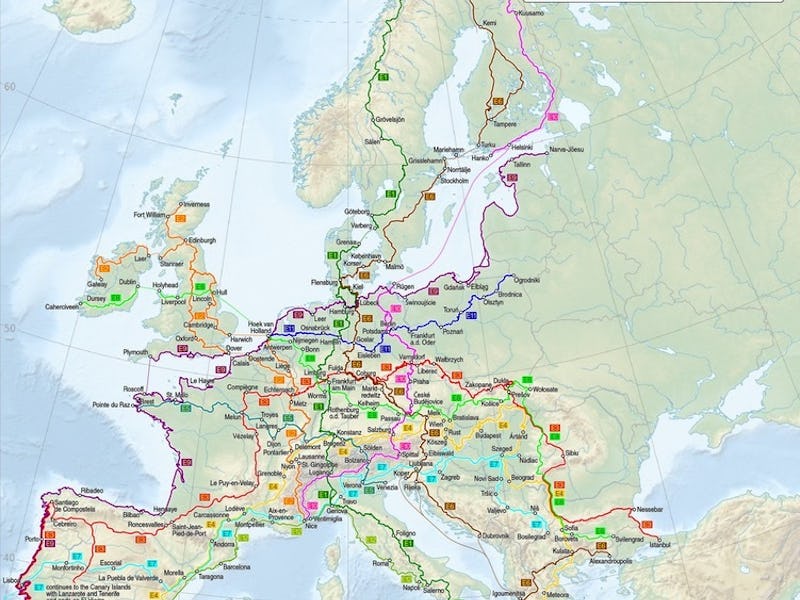Europe may be famous for cheap flights and dense rail networks, but the European Ramblers’ Association prefers a slightly different approach. The group’s long-distance walking paths cover 12 different routes across the continent, spanning bitterly cold routes through the Arctic Circle to baking hot deserts at the northern tip of Africa.
It’s hard to think about now, but these footpaths would have been used by most of the population as their sole means of transport. Even in the 19th century, when the industrial revolution made traveling long distances far easier, walking remained popular as romantic poets celebrated its positive effect on the self. These footpaths capture deep cultural and historical links throughout the continent.
The longest route stretches a staggering 11,800 kilometers (7,332 miles). The E4 route takes you from Tarifa in Spain, through Grenoble in France, up round to Budapest, before moving down through the Balkans through Belgrade, Sofia, then rounding off in Larnaca on the southern coast of Cyprus. Greece’s ministry of tourism recommends completing the route between mid-May and early October, due to the warm dry summers that are more conducive to walking than the cold, and the fact that in winter months many villages are uninhabited, which makes it harder to find accommodation.
Take a look at the map below to get a sense of the E4 (the yellow line):
Map of Europe's long distance walking routes.
And how long does this mega route take? TrailDino estimates the E4 takes around 520 days. Yup, around a year and five months. It’s safe to say it’s not for the faint of heart.
“It was an amazing journey and as far as I can tell I was the first person to complete this particular walk,” said John Hayes, who walked the E4 from Tarifa to Budapest in the space of six months. “You can go to wild and wonderful places, not see anyone all day, but spend your evenings indoors with other walkers. You can go from place to place, experience not just the variety of landscape but also different styles of accommodation and food.”
For something a bit easier than the E4, there’s the E12. This is the shortest route from the association and covers around 1,600 kilometers (994 miles). It’s also the newest, and it’s not quite complete yet, but it approximately runs from Ceuta (a Spanish enclave in North Africa) through Barcelona, up through Nice in France, down to Genova before ending in Italy’s Salerno.
Train networks might have made getting around Europe a breeze, but it’s hard to beat the wonders that can be found on a walking tour of Europe.
